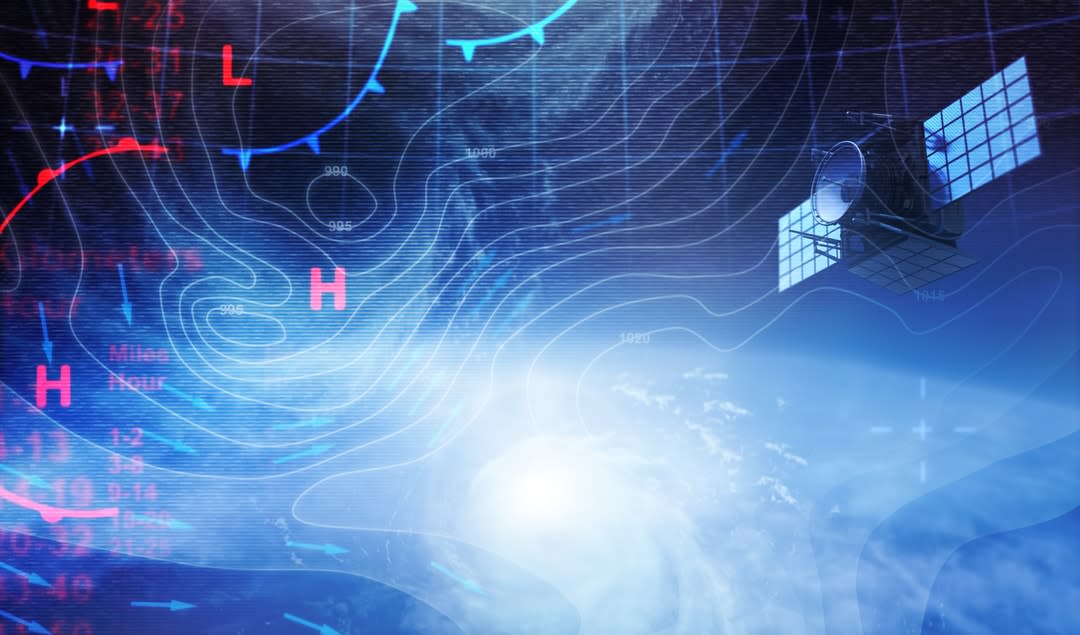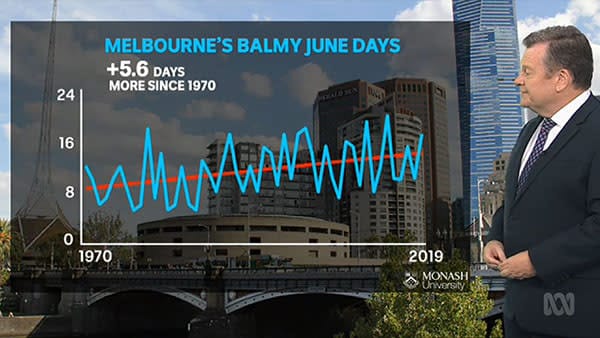
It’s fair to say that Paul Higgins is a communicator first and a weather presenter second.
The genial figure, who helms what many people hold to be the most important segment on the ABC Victoria’s flagship television news bulletin, nearly derailed his law and economics double degree at Monash University in the late 1970s thanks to a part-time job with radio station 3MP.
“I was always obsessed with radio, and getting a job there in production distracted me a bit,” says Higgins, who did indeed go on to finish both degrees. (He followed them up two decades later with a Bachelor of Business at Monash in 2003.) “My father was a journo, and I was brought up with news around the clock. It just had a real draw for me.”

After “13 or 14 years” presenting the weather at the ABC, Higgins has become a familiar and expected sight at the end of the 7pm bulletin. Yet his professional life hasn’t always involved an intimate knowledge of hectopascals.
That law degree remained on the shelf as he pursued a broad-ranging career in commercial radio and television, covering roles from production to presenting and management. He presented the ABC’s education program Behind the News, was a journalist on the 7.30 Report, and a producer of Nine’s Midday show in the mid-1990s.
It was happenstance that weather became his calling card: “I was being considered for a permanent news-reading job at Seven, but I didn’t get it, and as a consolation they said, ‘Do you know anything about the weather?’.
"Climate change is such a politically charged issue, and we still receive complaints that the ABC is pushing an agenda. But in providing this information that Monash offers, I haven’t received any complaints at all."
"As a kid I’d been interested in science and produced a little local newspaper that I tried to sell to the neighbours for two cents, and it was mostly about the weather – so luckily I was able to say ‘Yes’.”

Climate Communicators
The nightly weather bulletin has evolved beyond simply telling people whether they should pack an umbrella the following day. Higgins and Seven’s Jane Bunn were the first weather presenters to work with Climate Communicators, a program launched 18 months ago by Monash University’s Climate Change Communication Research Hub (MCCCRH).
Following the established model of Climate Central, which has signed up more than 500 weather presenters across the US, the MCCCRH supplies networks and presenters with graphics and other information they can use in their bulletins, giving people fact-based, locally relevant information about climate change.
“It’s great if we can communicate the science of climate change without advocacy, just peer-reviewed scientific facts. It makes it more palatable than hitting people over the head and pressing the doom-and-gloom button,” says Higgins. “Climate change is such a politically charged issue, and we still receive complaints that the ABC is pushing an agenda. But in providing this information that Monash offers, I haven’t received any complaints at all.”
Climate Communicators cleverly taps into audiences’ desire for television-based climate information from trusted sources such as weather presenters.
But does Higgins ever get the weather wrong?
“It’s good having grown up here in Melbourne and being aware of the city’s weather foibles,” he says, “but I certainly don’t try and pretend the forecast is anything but the Bureau of Meteorology’s.”





